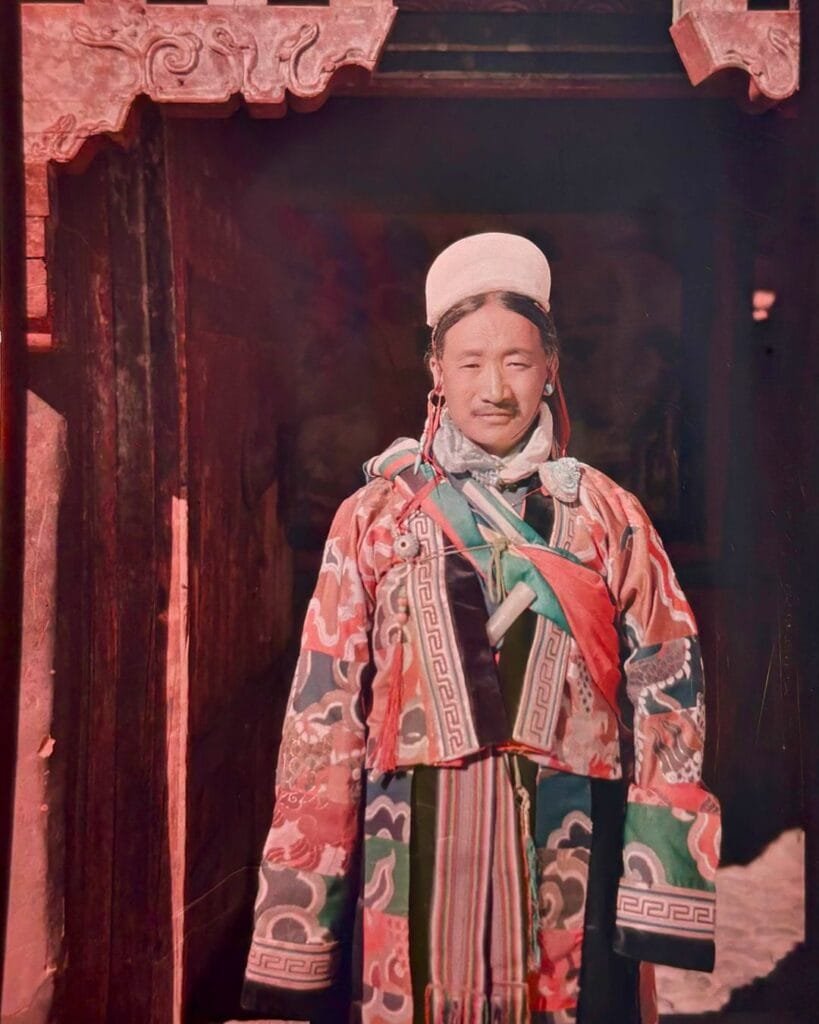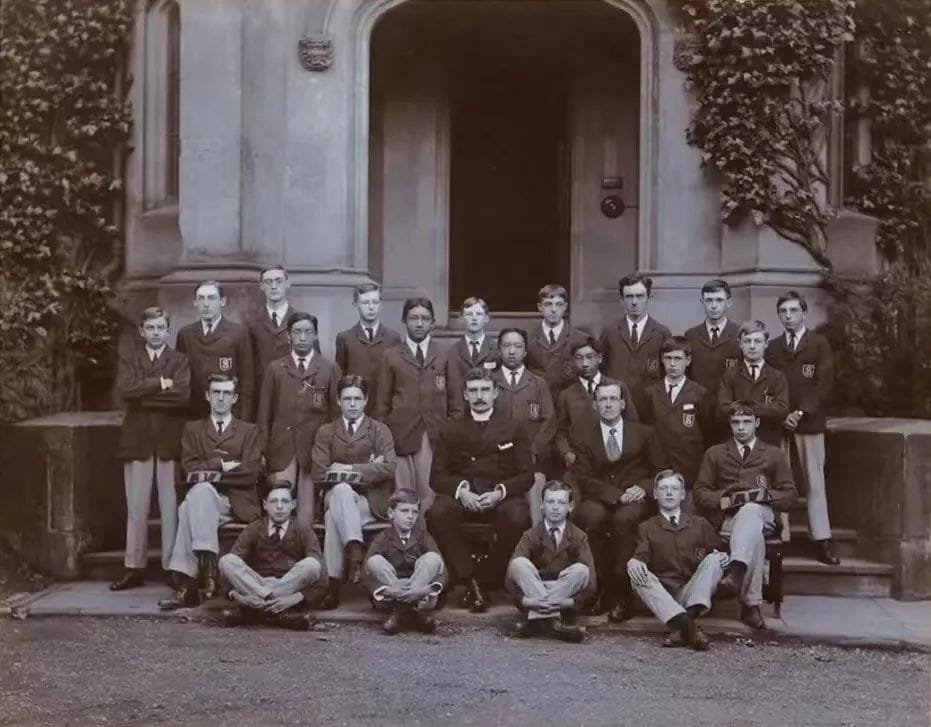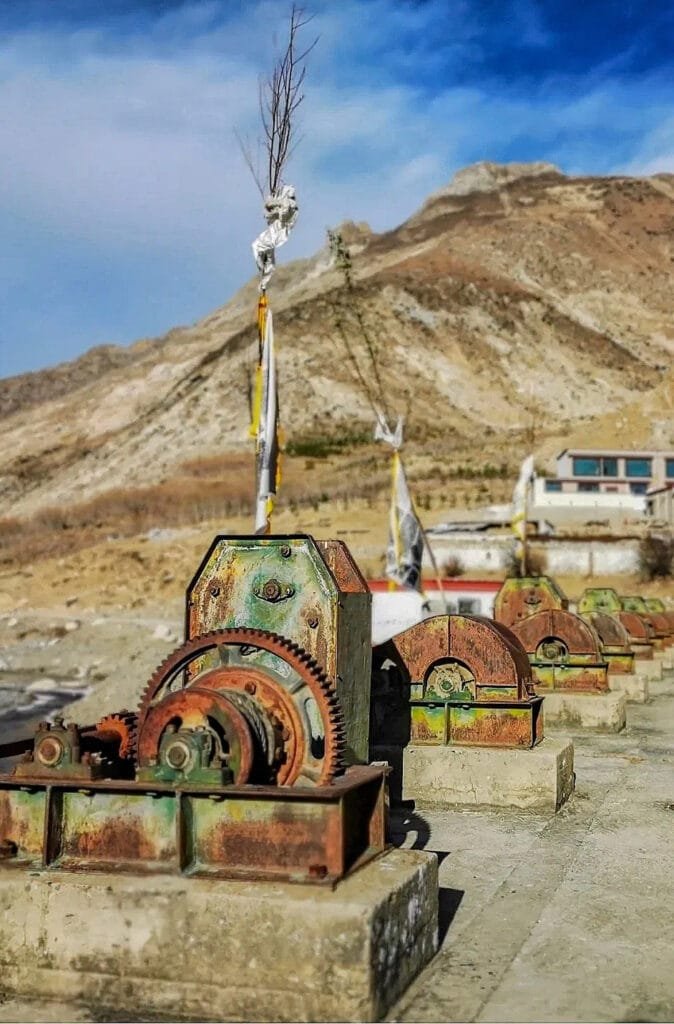The Dokde Hydroelectric Power Plant stands as a testament to Tibet’s efforts to modernize during the early 20th century under the progressive vision of the 13th Dalai Lama, Thupten Gyatso. This innovative project, initiated in 1925, marked a pivotal step in introducing modern infrastructure, such as electricity, telecommunications, and civil engineering capabilities, to the Tibetan Plateau.
The construction of the power plant was a collaborative effort between Tibetan officials and British financial and technical experts. Spearheading the initiative were prominent figures like Lungshar Dorje Tsegyal, Ringang Rinzin Dorje, Monjong Khyenrab Kunsang, Kibuwa Wangdu Norbu, and Gokarwa Sonam Gönpo, all of whom played crucial roles in transforming Tibet’s technological landscape.
Journey to England and Early Education
The group arrived in England on April 24, 1913, marking the beginning of their educational endeavors. They were first admitted to the Military Academy at Heathend, where they received foundational training, before continuing their studies at the prestigious Rugby School.
In June 1913, accompanied by their mentor Lungshar, the boys were honored with an audience with King George V and Queen Mary at Buckingham Palace. This recognition highlighted Tibet’s efforts to engage with global powers and adopt modern practices.

Ringang: A Trailblazer Among the “Four Tibetans of Rugby”
In 1925, Ringang (Chang Ngopa) Rinzin Dorje (བྱང་ངོས་རིག་འཛིན་རྡོ་རྗེ།), a visionary Tibetan scholar and engineer, undertook a groundbreaking project that would change the face of Tibet’s capital forever. After completing advanced studies in Britain, Rinzin Dorje returned to Tibet with an ambitious mission: to introduce electricity to Lhasa. With the backing of the Tibetan government, he led the construction of the Dokde Hydroelectric Power Plant, overcoming immense challenges to bring light and progress to his homeland.
Ringang was described as a brilliant student during his time at Rugby. He specialized in electrical and hydroelectric engineering, graduating with the skills and knowledge needed to bring technological advancements to his homeland.

The Challenges and Triumphs of Rigzin Dorje: A Journey from London to Lhasa
Facing the Challenges of Studying Abroad
When Ringang (Chang Ngopa) Rinzin Dorje and three fellow Tibetan students arrived in London, they faced overwhelming obstacles. Coming from a land with limited exposure to modern education, the young scholars had to start from scratch. They did not know English, nor were they familiar with the basics of modern natural sciences.
Their educational journey began at the most elementary level, involving intense studies in English, mathematics, and science. The students worked tirelessly, overcoming linguistic and cultural barriers to prepare themselves for the rigors of higher education. Only after years of rigorous foundational work were they admitted to Norbury College, a prestigious institution on par with Oxford and Cambridge. Known for training royalty and nobility from Britain, India, and other countries, Norbury provided the ideal environment for these young Tibetans to learn and grow.

Specialized Training and Unique Ambitions
Once they began their specialized studies, each Tibetan student pursued a field critical to Tibet’s modernization:
- Monjong Khyenrab Kunzang focused on mining.
- Kibuwa Wangdu Norbu specialized in telecommunications.
- Gokarwa Sonam Gönpo trained in military strategy.
- Changngopa Rinzin Dorje, passionate about technological progress, chose electrical engineering.
Rinzin Dorje, however, carried a unique vision beyond his primary studies. Inspired by Tibet’s 1904 struggle against British forces, he secretly studied firearm manufacturing alongside his engineering coursework. “I am studying for the defense of my homeland,” he declared, driven by a desire to protect Tibet from future invasions. This dual mission—modernizing his country’s infrastructure and strengthening its defenses—set Rinzin Dorje apart as an exemplary scholar and patriot.
An Exemplary Scholar’s Commitment to Tibet
Throughout his years at Norbury College, Rinzin Dorje’s technical competence and determination shone brightly. Despite the comforts and opportunities available in England, he remained deeply committed to his homeland. Over his decade-long stay, he returned to Tibet only once, underscoring his dedication to mastering the skills his country urgently needed.
Upon earning his engineering degree, Rinzin Dorje was recognized for his outstanding abilities. British authorities, impressed by his skills, offered him an attractive position to stay in England. However, his unwavering sense of duty led him to decline. “I must return quickly; Tibet needs people with this expertise even more,” he stated. This decision reflected his profound loyalty to his homeland and his vision of contributing to Tibet’s future.
Returning Home and Lighting Up Lhasa
Before leaving London, Rinzin Dorje acquired a 92.5-kilowatt generator—a significant technological asset for Tibet. Transporting this equipment across continents was a monumental task. The generator had to be shipped by sea and then carried over rugged Himalayan terrain, a journey involving both human and animal labor.
The expedition took over a year, marked by logistical challenges and physical hardship. Yet Rinzin Dorje’s determination never wavered. He personally oversaw the generator’s safe passage, ensuring its eventual arrival in Lhasa. This achievement was not merely about moving equipment; it was the first step in his larger mission to bring electricity to Tibet.



A Visionary Leader’s Enduring Impact
Rinzin Dorje’s unwavering dedication, from overcoming the challenges of studying abroad to the arduous journey back home, exemplifies his extraordinary commitment to Tibet. His efforts not only illuminated Lhasa with electricity but also illuminated a path for future generations of Tibetans to pursue education, innovation, and service to their homeland.
The story of Rinzin Dorje inspires us to recognize how education and resilience can lead to transformative progress, even in the face of the greatest challenges.
Leadership and Vision Behind the Project
The project’s leadership showcased a harmonious blend of Tibetan ingenuity and foreign expertise. Ringang Rinzin Dorje was tasked with overseeing the establishment of the Dokde power plant upon returning from abroad.
The Construction Process at Dokde Gorge
The Dokde power station was constructed in Dokde Gorge, a challenging terrain that required ingenuity and determination. In 1925, a team led by Ringang Rinzin Dorje brought together over ten laborers and more than fifty skilled artisans, including stonemasons, carpenters, and clay workers. These craftsmen built a Tibetan-style four-pillar power station, blending modern technology with traditional Tibetan architecture.
Despite limited resources and prior experience, the project was completed successfully, thanks to British funding and technical guidance. The cooperation with Britain highlighted Tibet’s willingness to embrace global innovations while maintaining its cultural identity.
A Scholar Abroad with a Mission
Rinzin Dorje’s journey began with a rare opportunity to study abroad. Traveling to Britain, he immersed himself in the latest advancements in engineering and power generation. While he could have enjoyed the comforts of life in the West, Rinzin Dorje’s heart remained tied to Tibet. Witnessing the transformative potential of modern technology, he became determined to bring these innovations to his homeland, where electricity was still a distant dream.
During his decade-long education, Rinzin Dorje honed his skills, preparing for the day he could apply his knowledge to uplift Tibet. His mission was not just to replicate Western technology but to adapt it in ways that respected and integrated Tibetan traditions.
Returning to Serve Tibet
In the 1920s, Rinzin Dorje returned to a Tibet that lacked the conveniences of modern infrastructure. Electricity was virtually nonexistent, and life after sunset relied on rudimentary lighting methods. Deeply moved by these limitations, he envisioned a brighter future for Tibetans—one powered by clean, renewable energy.
With the 13th Dalai Lama’s support, Rinzin Dorje began planning Lhasa’s first hydroelectric power plant. His vision reflected not only technological progress but also a commitment to improving the daily lives of Tibetan people.

Overcoming Challenges to Bring Power to Lhasa
Rinzin Dorje’s mission to electrify Lhasa was anything but simple. While in Britain, he procured a 92.5-kilowatt generator, capable of powering significant parts of the city. Transporting the generator to Tibet posed a monumental challenge, involving complex logistics and navigating political tensions.
Despite these obstacles, Rinzin Dorje personally ensured the equipment’s safe arrival in Lhasa. He identified Dokde Gorge, near the city, as an ideal location for the power plant due to its reliable water flow. Collaborating with local artisans, foreign engineers, and laborers, he led the construction of a Tibetan-style hydroelectric plant, blending modern engineering with traditional design.
The Dokde Hydroelectric Power Plant, supported by British financial and technical expertise, became a symbol of resilience and ingenuity. Rinzin Dorje’s leadership inspired the workforce, which included over fifty skilled artisans—stonemasons, carpenters, and clay workers—who transformed the ambitious vision into reality.
The Impact of the Dokde Hydroelectric Power Plant
When the Dokde Hydroelectric Power Plant began operations, it ushered in a new era for Lhasa. For the first time, homes, businesses, schools, and monasteries had access to steady electricity. This revolutionized daily life in the city:
- Monasteries and Schools extended their hours, enabling greater educational and spiritual activities.
- Businesses and Shops thrived with improved productivity and safer environments after dark.
- Households embraced a brighter, more comfortable way of life.
The power plant also became a model for future energy projects across Tibet, paving the way for modern infrastructure.
Legacy of Rinzin Dorje’s Vision
Rinzin Dorje’s contributions went beyond electrification. His work symbolized the power of education, innovation, and dedication to one’s homeland. By blending the best of Tibetan traditions with modern technology, he demonstrated how progress could be achieved without compromising cultural identity.
The Dokde power plant not only transformed Lhasa but also inspired a new generation of Tibetans to seek knowledge and work for the betterment of their communities. Rinzin Dorje’s legacy lives on as a reminder of how vision and perseverance can illuminate an entire region—both literally and figuratively.

